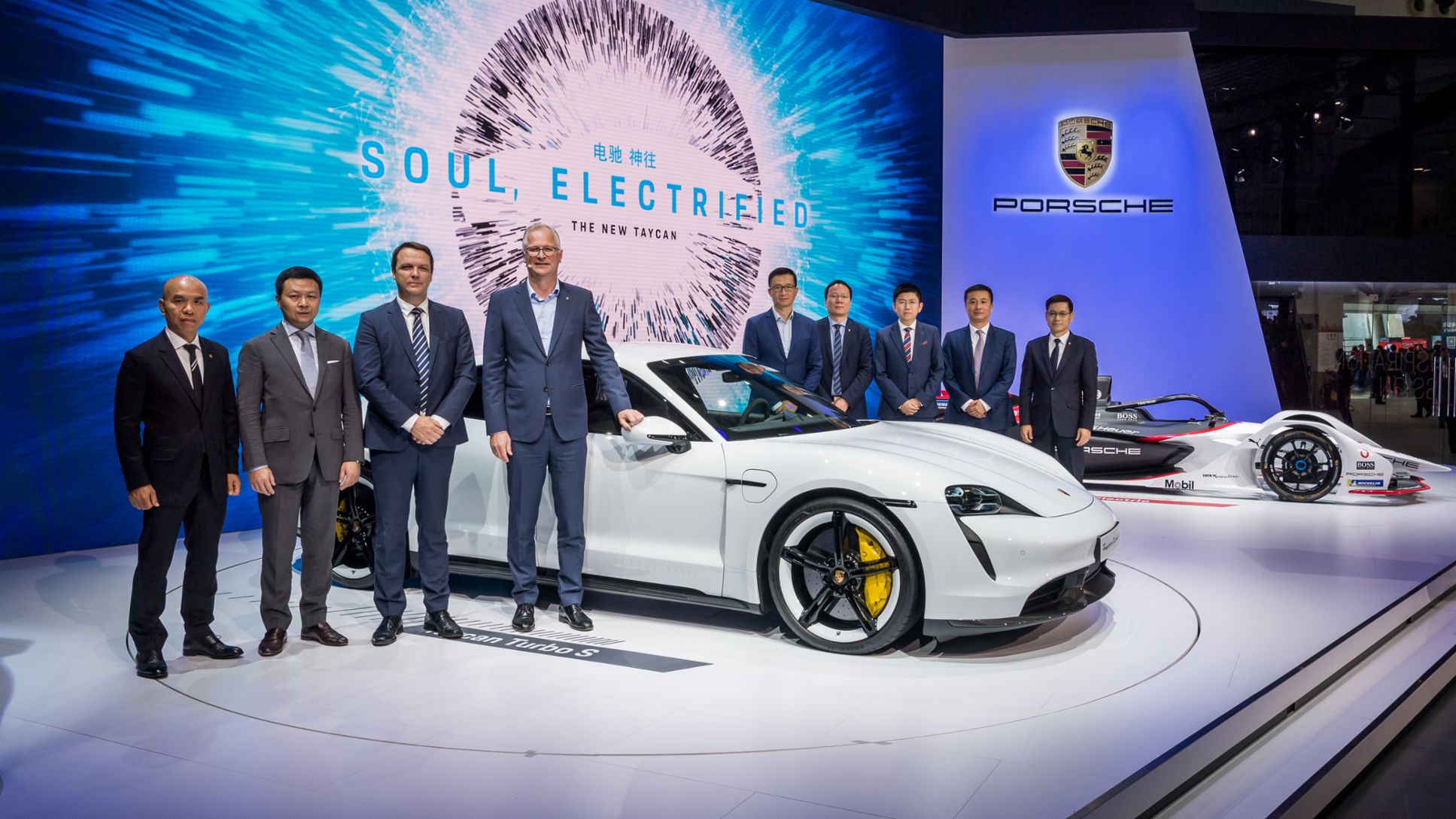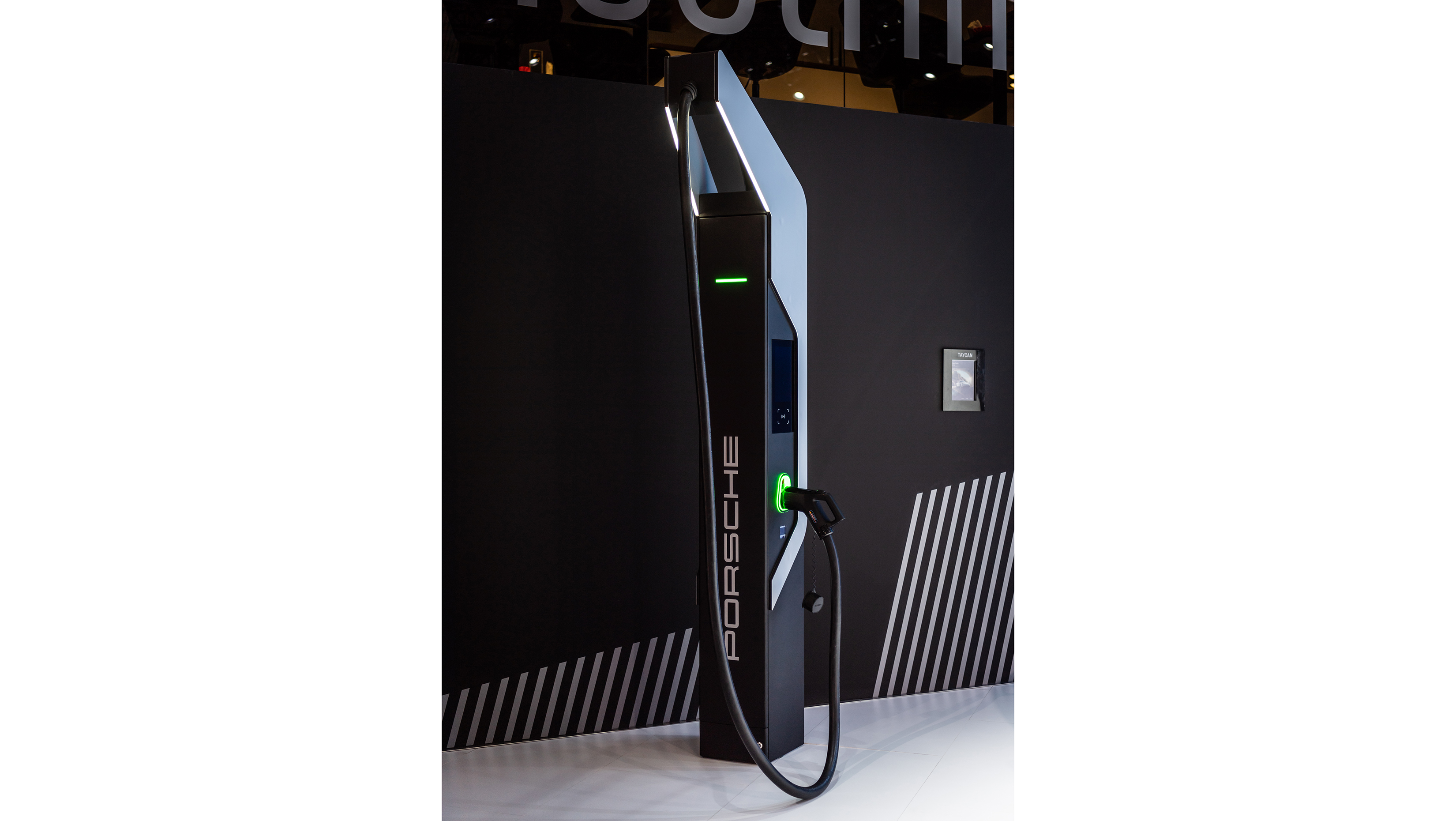The 17th Guangzhou International Automobile Exhibition is being held at the China Import and Export Fair Complex from November 22 to December 1. Porsche presents its full model line-up showcasing three distinct drive technologies, demonstrating its three-pronged product strategy. Taking centre stage on the Porsche stand are the marque’s first all-electric sports car the Taycan Turbo S and the Formula E race car the Porsche 99X Electric. Both are equipped with 800 volt technology, these two all-electric pioneers represent the pinnacle of electrification development so far, both on the road and the racetrack. When it comes to hybrid technology and thus e-drive technology, racing and production have been enriching each other at Porsche for around a decade, proving that the Porsche mantra of “born on the racetrack” will continue into the electric era. With the 99X Electric, Porsche is competing in the 2019/2020 season of the ABB FIA Formula E Championship, to further explore the possibilities of electrification technology. The first race kicked off on November 22.
With over 70 years of history as a leading global sports car brand, 70% of the cars ever produced by Porsche are still on the road today, which serves as a powerful testimony to Porsche quality and solidly affirms that Porsche attaches great importance to sustainability. Porsche Sustainability is now a consideration at the forefront of the brand’s entire value-chain. In response to CO2 emissions, Porsche Impact is a Porsche Digital global pilot project. By directly funding certified offsetting projects, car owners are able to offset the CO2 emissions from driving their vehicles. Today, this pilot project will also contribute to the sustainable future of China. After a full evaluation and development, the pilot project is expected to be opened to Chinese car owners in the future.
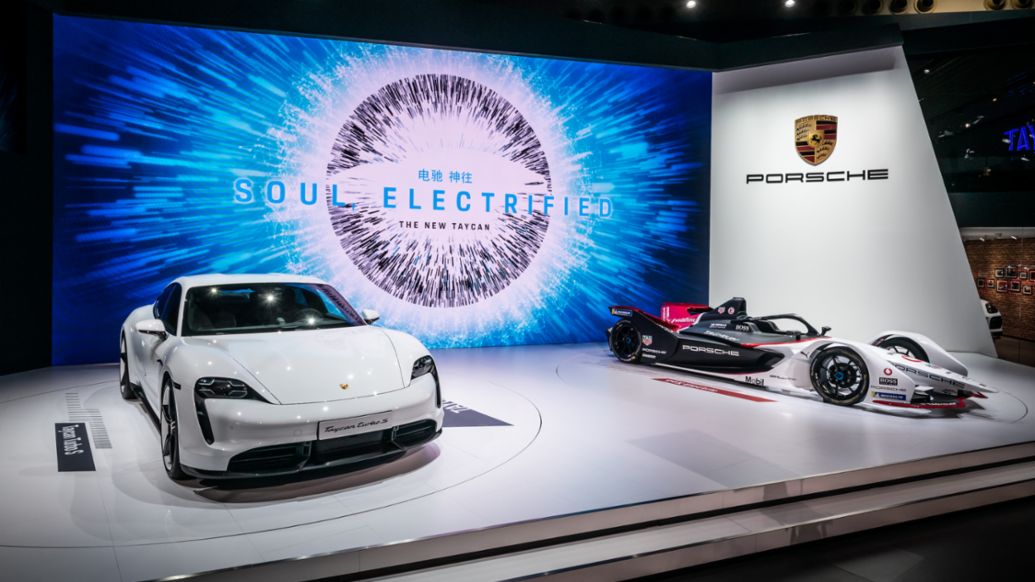
Porsche Taycan: First auto show appearance in China
It was only in September that the new Taycan celebrated its high-profile premiere on three continents simultaneously, which marks the beginning of a new era for Porsche as the company expands its product range in the field of e-mobility. The four-door sports saloon is a unique package offering typical Porsche performance, connectivity and comprehensive everyday usability. At the same time, highly advanced production methods and the production features of the Taycan are setting new standards in the fields of sustainability and digitalisation.
Three variants of the Taycan are now available to order in China, including the flagship Taycan Turbo S and Taycan Turbo, and also a third member of the Taycan family, the Taycan 4S which launched in the last month. The Taycan 4S is available with two battery sizes: The Performance Battery as standard, and the Performance Battery Plus – familiar to users from the flagship models – which is optionally available.
The Taycan is the pinnacle of Porsche‘s electrification developments so far, both on the road and the racetrack. Adopted from the Le Mans winning 919 Hybrid, the 800 volt technology enables consistently high performance and faster charging. Meanwhile, the intelligent thermal management system ensures ideal energy efficiency. The best-in-class recuperation further improves overall efficiency. In addition, the Taycan possesses outstanding aerodynamics design, enabling lower energy consumption and thus an impressively long range.
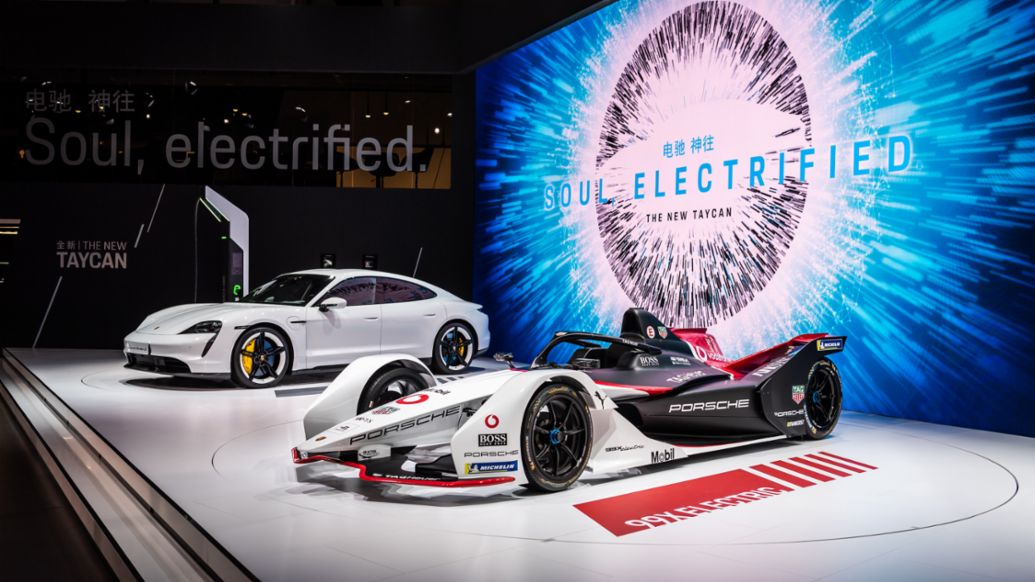
The Taycan Turbo S can generate up to 560 kW (761 PS; combined power consumption 26.9 kWh/100 km; combined CO2 emissions 0 g/km) overboost power in combination with Launch Control, and the Taycan Turbo up to 500 kW (680 PS; combined power consumption 26.0 kWh/100 km; combined CO2 emissions 0 g/km). The Taycan Turbo S accelerates from zero to 100 km/h in 2.8 seconds, while the Taycan Turbo completes this sprint in 3.2 seconds. The Turbo S has a range of up to 412 kilometres, and the Turbo a range of up to 450 kilometres (according to WLTP in each case) and up to 462 kilometers (according to NEDC). The top speed of both all-wheel-drive models is 260 km/h.
Breathtaking acceleration, tractive power typical of sports cars and outstanding continuously available power – the new model 4S also features these strengths of the Taycan. The power output therefore vary correspondingly: with the Performance Battery with a total capacity of 79.2 kWh as standard, the Taycan 4S generates up to 390 kW (530 PS; combined power consumption 24.6 kWh/100 km; combined CO2 emissions 0 g/km) overboost power output. Equipped with the Performance Battery Plus with a total capacity of 93.4 kWh, it delivers up to 420 kW (571 PS; combined power consumption 25.6 kWh/100 km; combined CO2 emissions 0 g/km). In both variants, the Taycan 4S accelerates from a standing start to 100 km/h in 4.0 seconds. The top speed is also 250 km/h in both cases.
In China, based on the current GB standard, maximum 200 kW charging power can be supported with 800 volt. Under ideal conditions, the charging time required to take the battery from five to 80 percent SoC (state of charge) is about half an hour. By the middle of next year, 80% of Porsche Centres will be equipped with this high power charging infrastructure. In order to provide Taycan customers with maximized convenience and accessibility of charging services, Porsche is developing exclusive parking and charging networks in the downtown areas of Beijing, Shanghai, Shenzhen and Chengdu, and gradually expanding city coverage to establish over 100 stations by end of 2020, including both high power DC charging and fast DC charging services. Porsche will start offering valet charging services in the four major cities and enlarging city coverage alongside the expansion of exclusive charging network developments. In addition, Porsche will integrate over 100,000 nationwide 3rd party charging stations. Customers who successfully purchase a Taycan will be provided with one set of free home charging hardware as well as basic installation services.
The Taycan signals the beginning of a new era with many notable highlights. At the same time, it retains the unmistakable Porsche design DNA. The freestanding, curved instrument cluster forms the highest point on the dashboard. This places a clear focus on the driver axis. A central, 10.9-inch infotainment display and an optional passenger display are combined to form an integrated glass band in a black-panel look. All user interfaces have been completely newly designed for the Taycan. The number of classic hardware controls such as switches and buttons has been greatly reduced. Instead, control is intelligent and intuitive – using touch operation or the voice control function, which responds to the command “Hey Porsche”. More connected technology services have further enhanced everyday practicality.
With the Taycan, Porsche offers an entirely leather-free interior for the first time. Interiors made from innovative recycled materials underscore the sustainable concept of the electric sports car. “Foot garages” – recesses in the battery in the rear footwell – ensure sitting comfort in the rear and allow for the low vehicle height typical of sports cars. There is no doubt that the Taycan is still an easily recognisable Porsche sports car.
To optimise the comfort for Chinese customers, the Taycan will be delivered with the fixed Panoramic Glass Roof and the Four-Zone Automatic Climate Control exclusively in China. In coordination with the sporty dynamics, the Taycan Turbo will offer the 20-inch Taycan Turbo Aero Wheels and Porsche Surface Coated Brake (PSCB) as standard, while the Taycan Turbo S will offer the 21-inch Mission E Design Wheels and the Porsche Ceramic Composite Brake (PCCB), as well as the electric charging cover. Both turbo models are available with the LED-Matrix Design Headlights including Porsche Dynamic Light System Plus (PDLS Plus).
Distinguishing features of the Taycan 4S compared with the Turbo and Turbo S include the aerodynamically optimised 19-inch Taycan S Aero wheels and the red-painted brake callipers. The front apron with new geometry, side sills and rear diffuser in black ensure further visual differentiation. LED headlights including Porsche Dynamic Light System Plus (PDLS Plus) are equipped as standard.
With Porsche Exclusive Manufaktur, Porsche offers a wide range of individual options for the Taycan. Some of the highlights in terms of exclusive options currently exclusively available for the Taycan are the PDLS Light in Glacier Blue and rear Light Strip in Glacier Blue, new Aeroblades Wheels in Carbon. The offerings and options for the Taycan will continue to be constantly expanded.
Porsche 99X Electric: First race in Formula E coincides with the Guangzhou Auto
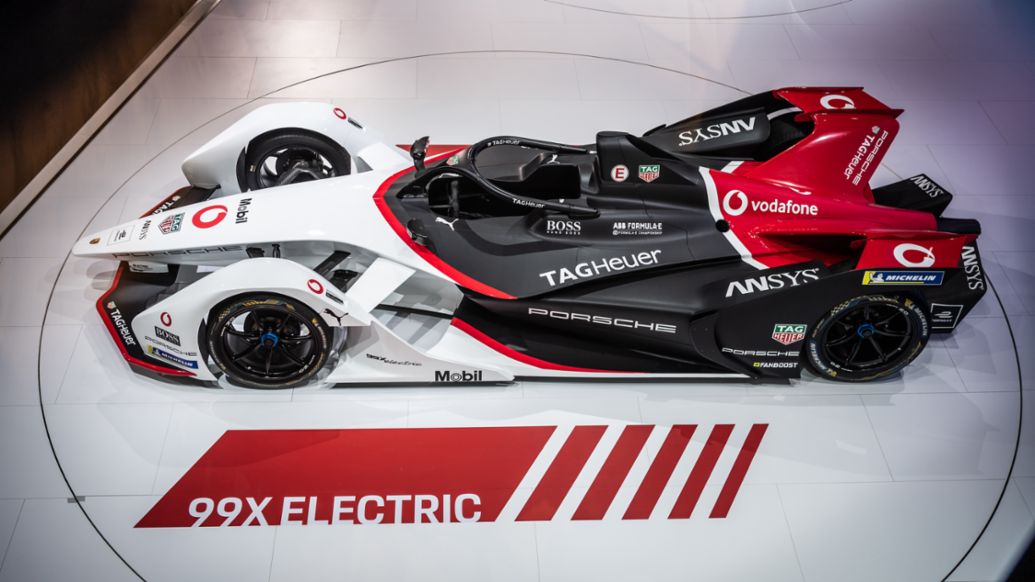
The first race for the TAG Heuer Porsche Formula E Team is taking place in Riyadh, Saudi Arabia, on 22 and 23 November 2019. After more than 30 years, Porsche returns to single-seater racing. The decision to enter Formula E – and the accompanying restructuring of te motorsport involvement – is fully derived from the 2025 Porsche strategy. In addition to traditional GT road-going sports cars, fully electric sports cars are also firmly anchored in the strategy. Both will be reflected in the Porsche world of motorsport in the future.
A few weeks ago, the TAG Heuer Porsche Formula E Team and its two regular drivers, Neel Jani and André Lotterer, completed three days of intensive testing on the Circuit Ricardo Tormo near Valencia, The programme at the official Formula E test largely consisted of testing various car set-ups and simulations of both qualifying and races.
The 99X Electric racecar represents the innovative spirit of Porsche. Although all teams need to use the same chassis under the rules of Formula E, Porsche is characterized by skilled drivcooling systems, and rear axle suspension specifically for Formula E. In addition, the powertrain of the 99X Electric inherits the superb technology from the 919 Hybrid. Like the new Taycan, it is also powered by the advanced 800 volt technology and will further explore the possibilities of electrification technology on the track.
Porsche Impact: dedicating to a sustainable future
Sustainability is a central topic of the Porsche 2025 strategy and a key area of Porsche's corporate responsibility. With a very clear goal – to become the most sustainable premium sports car manufacturer in the world – Porsche is inventing and implementing measures across the entire value chain for avoiding and reducing CO2 emissions.
The CO2 Pyramid from Porsche contains three key steps: “Avoidance”, “Reduction” and “Offsetting”. This sports car manufacturer does everything in its power to avoid CO2 emissions, or at least to reduce them. In doing so, Porsche has been active in many areas and has made robust progress. For example, the production of the Taycan with its zero-emission powertrain at the Zuffenhausen site will be CO2-neutral, which marks a further step towards the “Zero Impact Factory” ideal. In addition to using electricity from renewable sources and bio-gas to generate heat, the new production buildings are designed to be extremely energy-efficient; “green logistics” have been adopted as part of the brand’s logistics strategy, using green rail transportation solutions and increasing use of electric logistics trucks. For the remaining CO2 emissions, Porsche offers the opportunity for car owners to offset their vehicle-specific CO2 footprint through a “Porsche Impact” calculator that is also a sustainable solution.
With Porsche Impact, car owners use their annual mileage, model and vehicle characteristics to determine the CO2 generated and the level of financial contribution required – given in support of a climate-related project – to neutralise their CO2 emissions. The Porsche driver can then choose which internationally certified projects to support. The available schemes, focused on biodiversity, hydro power, forest protection and wind energy. This also includes a Wind Farm project based in China’s Hebei province– Danjinghe Wind Project – aiming to power sustainable development in North China by harnessing clean wind energy.
Porsche China has enrolled in the pilot by offsetting the emissions from its internal fleet, which has resulted in a minimum offset contribution of 655 tons of CO2 annually from 186 vehicles. In the future, this project will be carefully evaluated and offered to Chinese customers who want to reduce their CO2 footprint.
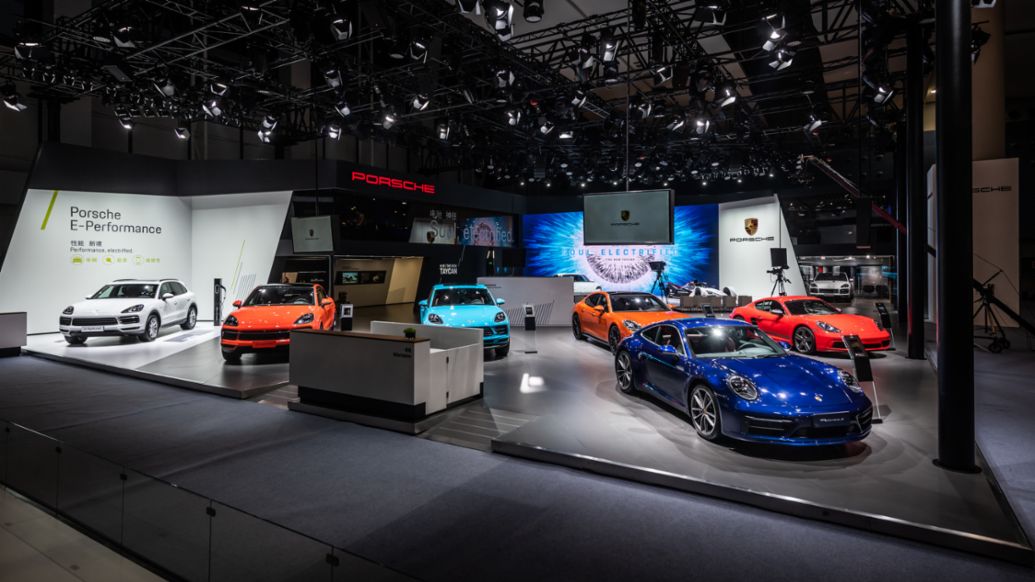
To be rooted in the furture with the Chinese market
Since entering the Chinese market in 2001, Porsche has continued to excel in terms of branding, products, dealer networks and customer services. “By the end of October, we have delivered more than 70,000 vehicles from 121 sales points.” Said Dr. -Ing. Jens Puttfarcken, President and CEO of Porsche China. Besides the steady-growth of the dealer network layout and the ever-expanding sports car line-up, Porsche is committed to providing exclusive brand experiences and services to further satisfy the diverse consumer needs of Chinese customers. “At the Porsche Experience Centre Shanghai, over 8,000 participants have registered for our driving activities this year, plus tens of thousands of visitors both onsite and on social media. We are very happy to successfully enable ever-more Chinese customers to enjoy the sports car fascination of Porsche.” Dr. -Ing. Jens Puttfarcken added.
